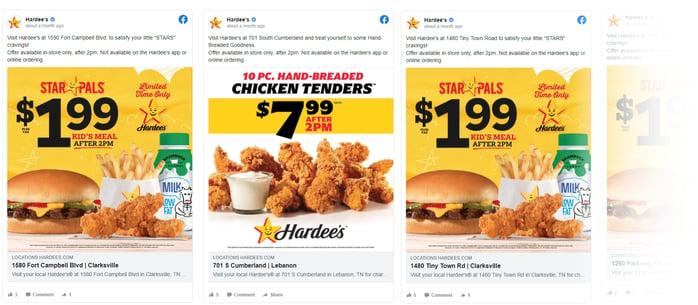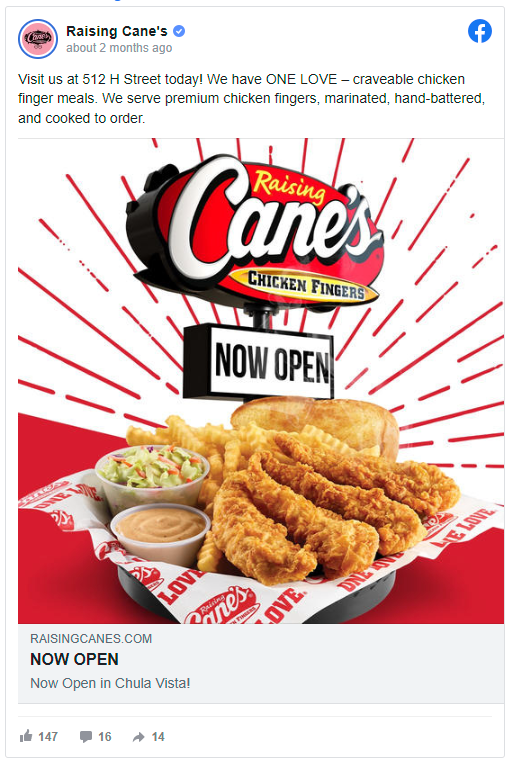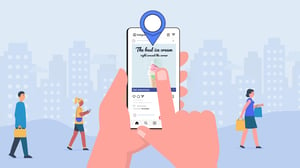
Hyperlocal Social Media Marketing Guide (with Examples)
A notable trend is growing in social media marketing — brands are increasingly shifting their focus towards niche, personalized, and one-to-one experiences. As customers demand more relevance and authenticity, businesses are finding that hyperlocal social media marketing is a great strategy to stand out.
In this blog post, we will explore what hyperlocal marketing is and how you can harness it to grow your business.
What is Hyperlocal Social Media Marketing?
Hyperlocal social media marketing is a digital marketing approach that focuses on targeting a specific geographic area to connect with potential customers within that locality. This strategy is especially popular among local brick-and-mortar businesses. By narrowing down the target market to a precise location, local businesses can tailor their content and promotions to suit the preferences and interests of their local audience.
Benefits of Hyperlocal Social Media Marketing
- Enhanced Customer Engagement: Connect with your local audience on a personal level, fostering stronger relationships and brand loyalty.
- Increased Foot Traffic for Brick-and-Mortar Businesses: Target users within close proximity to your physical store, driving more potential customers to visit in person.
- Better Relevance and Personalization: Tailor content to local preferences, interests, and cultural nuances, making your brand more relatable and appealing.
- Optimized Reduced Ad Spend: By narrowing your target area, you can focus your advertising budget on the most relevant audience, resulting in cost-effective campaigns.
- Local Community Building: Establish a sense of community and trust, encouraging customers to become brand advocates and generate organic word-of-mouth marketing.
Examples of Hyperlocal Social Media Marketing
Local Deals: Hardee's
Local coupons: Lidl
Lidl implements a clever hyperlocal marketing strategy by sharing location-specific coupons with their loyal customers. As an exclusive offer for myLidl members, they provide a coupon for $1 OFF a gallon of milk, available for a limited time only. By listing the specific store locations where the coupon is valid, Lidl entices customers to visit these stores and take advantage of the discount.
Specific stores: The Bouqs Company
The Bouqs Company executes an effective hyperlocal marketing strategy by targeting Chicago with tailored content. By announcing their presence in the city and inviting customers to shop online or visit their in-store location near River North, The Bouqs Company creates a sense of exclusivity and convenience for local customers.
New location: Sprouts Farmers Market
Sprouts Farmers Market capitalizes on hyperlocal marketing to generate excitement around their new store opening in San Jose. By sharing this exciting announcement on social media, Sprouts targets local residents, encouraging them to explore the fresh produce, quality meats, and unique discoveries at the new location.
Coming Soon: Crumbl Cookies
Crumbl Cookies employs an anticipatory hyperlocal marketing strategy to build excitement ahead of their new location opening in Florence. This strategy creates a buzz around their opening, encouraging locals to visit the new store once it's launched.
Now Open: Raising Cane's
Raising Cane's utilizes an engaging hyperlocal marketing strategy to celebrate the grand opening of their new location. By inviting customers through a simple yet enticing caption and showcasing their signature chicken finger meals, Raising Cane's sparks immediate interest and draws attention to their new spot.
Right Around The Corner: Tim Hortons Cafe and Bake Shop
Tim Hortons Cafe and Bake Shop employs an engaging hyperlocal marketing strategy to captivate potential customers in Texas and Georgia. By appealing to their target audience's curiosity and anticipation, Tim Hortons positions their coffee, breakfast, and treats as accessible and just "right around the corner."
How to Implement Your Hyperlocal Social Media Marketing Strategy
Step 1 - Define Your Very Specific Target
The first step in creating an effective hyperlocal social media marketing strategy is to define your target area. Identify the specific geographic locations where you want to concentrate your efforts. This could be a city, neighborhood, or even a small block near your physical store.
For instance, if you run a local coffee shop, your target area might be the immediate vicinity of your store. On the other hand, if you offer specialized B2B services, you might focus on targeting companies in a specific industry within a particular city.
Try asking yourself these questions to uncover your targeting:
| ❓ | What is the primary geographic area we want to focus on? Identify the specific city, neighborhood, or locality that aligns with your business goals. |
| ❓ | Which locations have shown the most interest in our products/services? Analyze past customer data to identify areas with high engagement and conversion rates. |
| ❓ | What are the demographics of the target area? Understand the age, gender, income level, and other relevant demographic factors of the local population. |
| ❓ | What are the interests and preferences of the local audience? Research local trends, events, and activities to create content that resonates with the target audience. |
| ❓ | Who are our main competitors in this specific location? Analyze the competition in the target area to understand the market landscape. If your store is close to your competitor, you can also target the competitor's store location. |
Step 2 - Find the Best Platform to Target Your Niche
Once you've determined your target, the next step is to choose the most suitable social media platform to reach your audience.
For e-commerce brands, platforms like Facebook and Instagram can target individuals with interests connected to a geographic location. For example, if you sell beachwear, you can target beachgoers in coastal areas during the summer season.
Brick-and-mortar stores can benefit from using a combination of Facebook, Instagram, and TikTok to target the local community surrounding their physical location. Creating engaging content with local relevance will attract potential customers in the vicinity.
For B2B companies, LinkedIn is an excellent platform for hyperlocal marketing. Utilize its precise ad targeting capabilities to reach specific companies, job titles, and industry professionals.
To find the best platform to target your niche for hyperlocal social media marketing, brands can ask themselves the following questions:
| ❓ | Which social media platforms are most popular among our target audience in the specific geographic area? Identify the platforms that are widely used by the local community to maximize your reach. |
| ❓ | Are there any local influencers or businesses that have a strong presence on specific social media platforms? Research local influencers and businesses to determine which platforms they are most active on. |
| ❓ | Which platforms offer the most advanced targeting options for hyperlocal marketing? Evaluate the advertising features and targeting capabilities of different platforms to match your objectives. |
| ❓ | Where are our competitors investing in hyperlocal marketing? Conduct a competitor analysis. An effective way to gain insights is by analyzing competitors' Out-of-Home advertising, which often targets specific geographic areas. |
Step 3 - Run Hyperlocal Ads
With your target area and platform in mind, it's time to create hyperlocal ads that resonate with your audience.
Tips for creating successful hyperlocal ads:
| 📱 | Optimize for Mobile Devices Ensure your ads are optimized for mobile viewing, as many users access social media platforms on their smartphones while on the go. |
| 📍 | Write Geo-targeted Ad Copy Use location-specific keywords in your ad copy, such as "near you," the name of the city or neighborhood, or local landmarks. |
| 🖼️ | Use Localized Visuals Incorporate images or videos that feature recognizable local landmarks, scenery, or cultural elements. |
| 🗓️ | Promote Local Events and Offers Highlight upcoming events, special promotions, or limited-time offers that are exclusive to the target area. |
| 📜 | Hyperlocal Landing Pages Create dedicated landing pages for each hyperlocal ad campaign. |
| ⏲️ | Use Time-Sensitive CTAs Include urgent and time-sensitive call-to-action (CTA) phrases, like "Limited spots available." This creates a sense of urgency, prompting immediate responses. |
Step 4 - Analyze and Manage Conversations
Analyzing the performance of your hyperlocal social media marketing efforts is crucial for continuous improvement. Monitor engagement metrics, click-through rates, and conversion rates to understand which strategies are working best for your business.
As a business delving into hyperlocal social media marketing, managing your social media conversations is vital
In hyperlocal marketing, the comments section plays a significant role in understanding the sentiment and feedback of your audience. Responding to comments promptly shows that you value your community's opinions and fosters a sense of trust and loyalty.
To manage your social media conversations efficiently on a hyperlocal level, consider using tools like BrandBastion Lite. This tool allows you to filter and organize comments by ad targeting, campaign, and ads.
- Filtering comments based on ad targeting enables you to segment and categorize conversations according to your hyperlocal marketing efforts. By understanding which hyperlocal strategies are resonating better with your audience, you can fine-tune your approach and focus on the areas that drive the most significant results.
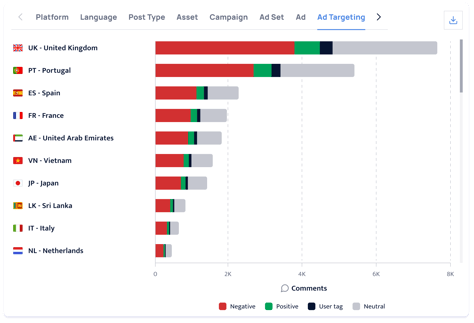
- Analyzing comments based on campaigns and individual ads helps you gauge the performance of each hyperlocal marketing initiative separately. Armed with this knowledge, you can make data-driven decisions and allocate your marketing resources more effectively.
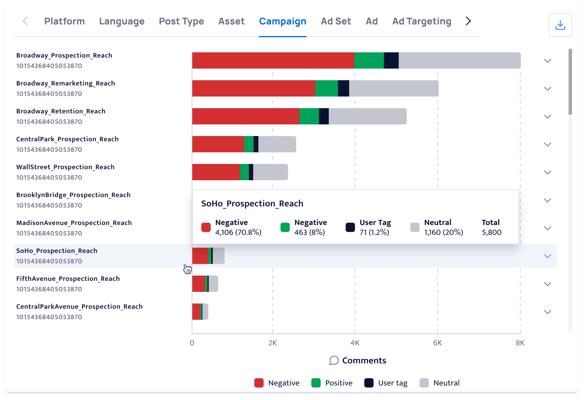
As you filter and identify comments that relate to your hyperlocal marketing endeavors, you can respond promptly and authentically to each one. Engaging with your audience in a personalized manner fosters a sense of community and trust.
Try BrandBastion Lite for 15 days:
Manage social media conversations at scale with hyperlocal personalization
Facebook, Instagram, Youtube, TikTokAds & Organic covered (including FB Dynamic Ads)
START FREE TRIAL
